Stephen Asma in the New York Times:
 It’s a tough time to defend religion. Respect for it has diminished in almost every corner of modern life — not just among atheists and intellectuals, but among the wider public, too. And the next generation of young people looks likely to be the most religiously unaffiliated demographic in recent memory.
It’s a tough time to defend religion. Respect for it has diminished in almost every corner of modern life — not just among atheists and intellectuals, but among the wider public, too. And the next generation of young people looks likely to be the most religiously unaffiliated demographic in recent memory.
There are good reasons for this discontent: continued revelations of abuse by priests and clerics, jihad campaigns against “infidels” and homegrown Christian hostility toward diversity and secular culture. This convergence of bad behavior and bad press has led many to echo the evolutionary biologist E. O. Wilson’s claim that “for the sake of human progress, the best thing we could possibly do would be to diminish, to the point of eliminating, religious faiths.”
Despite the very real problems with religion — and my own historical skepticism toward it — I don’t subscribe to that view. I would like to argue here, in fact, that we still need religion. Perhaps a story is a good way to begin.
One day, after pompously lecturing a class of undergraduates about the incoherence of monotheism, I was approached by a shy student. He nervously stuttered through a heartbreaking story, one that slowly unraveled my own convictions and assumptions about religion.
More here.

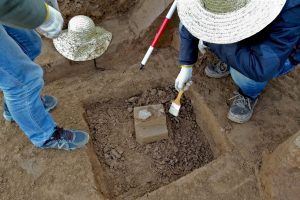 The oldest stone tools outside Africa have been discovered in western China, scientists reported on Wednesday. Made by ancient members of the human lineage, called hominins, the chipped rocks
The oldest stone tools outside Africa have been discovered in western China, scientists reported on Wednesday. Made by ancient members of the human lineage, called hominins, the chipped rocks  For nearly 40 years, the gender gap in voting has been the subject of continued speculation. How much does it matter? Would it be wide enough to put Democrats in office? Now, with President Trump ascendant, the question becomes still more urgent: What happens if the gender gap becomes a gender chasm?
For nearly 40 years, the gender gap in voting has been the subject of continued speculation. How much does it matter? Would it be wide enough to put Democrats in office? Now, with President Trump ascendant, the question becomes still more urgent: What happens if the gender gap becomes a gender chasm? Tribalism and slavery are as old as humanity. The very first human records are records of human bondage. Reports estimate that today 60 million people are held as slaves. While each one of these lives represents an unacceptable tragedy, not one occurs with the approval of law. And that is revolutionary. For while slavery is as old as humanity, abolitionism is a relatively recent phenomenon that did not emerge until the ideas and ideals of the Enlightenment nurtured it into existence.
Tribalism and slavery are as old as humanity. The very first human records are records of human bondage. Reports estimate that today 60 million people are held as slaves. While each one of these lives represents an unacceptable tragedy, not one occurs with the approval of law. And that is revolutionary. For while slavery is as old as humanity, abolitionism is a relatively recent phenomenon that did not emerge until the ideas and ideals of the Enlightenment nurtured it into existence.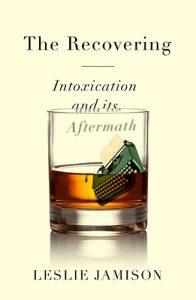 The Recovering is interested in resonance, or in what Jamison calls the ‘chorus’ – other voices, other narratives of both illness and recovery – and what they might offer to other people suffering or in pain. Resonance, she insists, isn’t ‘the same as conflation’ and doesn’t ‘mean pretending we’[ve] all lived the same thing.’ It’s not about ‘perfect correspondence’ but about ‘the possibility of company’, about fellowship, perhaps, or the realisation that our experiences are so often shared, that they aren’t ever unique, and that it’s precisely this commonality that makes them important. ‘Every addiction,’ she writes, ‘lives at the intersection between public and private experience.’ So too, perhaps, every illness, every bodily injury, everything that changes the way in which we are in the world.
The Recovering is interested in resonance, or in what Jamison calls the ‘chorus’ – other voices, other narratives of both illness and recovery – and what they might offer to other people suffering or in pain. Resonance, she insists, isn’t ‘the same as conflation’ and doesn’t ‘mean pretending we’[ve] all lived the same thing.’ It’s not about ‘perfect correspondence’ but about ‘the possibility of company’, about fellowship, perhaps, or the realisation that our experiences are so often shared, that they aren’t ever unique, and that it’s precisely this commonality that makes them important. ‘Every addiction,’ she writes, ‘lives at the intersection between public and private experience.’ So too, perhaps, every illness, every bodily injury, everything that changes the way in which we are in the world.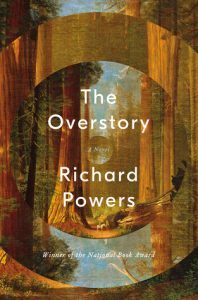 The Overstory displays some of the formal and stylistic ingenuity we have come to expect from a Richard Powers novel, from his acoustically adventurous prose to his multiple, intertwined narratives (even more multiple in this novel), so characterizing it as purely “agitprop” would be neither fair nor accurate, although the novel is certainly transparent enough in its effort to promote environmental mindfulness. And since Powers has always been willing to take on the weightiest of subjects, generally treated in an earnestly sincere manner, it would go too far to call The Overstory sentimental, although the passages invoking its characters’ often rapturous appreciation of the trees that threaten to replace the characters themselves as the novel’s true dramatis personae are surely full of passionate intensity.
The Overstory displays some of the formal and stylistic ingenuity we have come to expect from a Richard Powers novel, from his acoustically adventurous prose to his multiple, intertwined narratives (even more multiple in this novel), so characterizing it as purely “agitprop” would be neither fair nor accurate, although the novel is certainly transparent enough in its effort to promote environmental mindfulness. And since Powers has always been willing to take on the weightiest of subjects, generally treated in an earnestly sincere manner, it would go too far to call The Overstory sentimental, although the passages invoking its characters’ often rapturous appreciation of the trees that threaten to replace the characters themselves as the novel’s true dramatis personae are surely full of passionate intensity.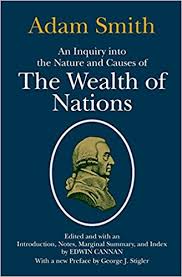 The received view of Smith is as the founding father of laissez-faire economics (the institute that bears his name certainly provided intellectual fuel to the laissez-faire policies of Margaret Thatcher). But as Norman – mostly correctly – argues, this is wrong, or at least an incomplete view. His goal is to round it out. He is not engaged, however, in just an intellectual exercise. He is battling for the soul of modern conservatism and he wants Smith on his side.
The received view of Smith is as the founding father of laissez-faire economics (the institute that bears his name certainly provided intellectual fuel to the laissez-faire policies of Margaret Thatcher). But as Norman – mostly correctly – argues, this is wrong, or at least an incomplete view. His goal is to round it out. He is not engaged, however, in just an intellectual exercise. He is battling for the soul of modern conservatism and he wants Smith on his side. On August 1943, the sales team at
On August 1943, the sales team at  When Masih Alinejad was a girl in the tiny Iranian village of Ghomikola, her father — who eked out a living selling chickens, ducks and eggs — once brought home a thick yellow stick. Her mother, the village tailor, cut it into six tiny pieces at her husband’s instruction. Each child got one, including the youngest, our author. The yellow stick was a banana, a fruit that the poor family had never seen or tasted. Alinejad, the rebel of the lot, didn’t listen when told to throw the skin away; she sneaked it to school the next day to show off to her friends.
When Masih Alinejad was a girl in the tiny Iranian village of Ghomikola, her father — who eked out a living selling chickens, ducks and eggs — once brought home a thick yellow stick. Her mother, the village tailor, cut it into six tiny pieces at her husband’s instruction. Each child got one, including the youngest, our author. The yellow stick was a banana, a fruit that the poor family had never seen or tasted. Alinejad, the rebel of the lot, didn’t listen when told to throw the skin away; she sneaked it to school the next day to show off to her friends. She got away with it, but the episode was a precursor of what is to come; hers is a life of rebellions big and small followed by ignominious and sometimes draconian punishments. At 18, Alinejad, who would ultimately rise from her humble beginnings to become one of Iran’s top journalists, is carried off to prison. She has been stealing books and carrying on with a ragtag group of feverish ideologues whose crime is printing pamphlets calling for greater dissent in Iranian society. It is enough to get them all arrested.
She got away with it, but the episode was a precursor of what is to come; hers is a life of rebellions big and small followed by ignominious and sometimes draconian punishments. At 18, Alinejad, who would ultimately rise from her humble beginnings to become one of Iran’s top journalists, is carried off to prison. She has been stealing books and carrying on with a ragtag group of feverish ideologues whose crime is printing pamphlets calling for greater dissent in Iranian society. It is enough to get them all arrested. On September 22, 2017, a tiny but energetic particle pierced Earth’s atmosphere and smashed into the planet near the Amundsen-Scott South Pole Station in Antarctica. The collision set loose a second particle, which lit a blue streak through the clear ice.
On September 22, 2017, a tiny but energetic particle pierced Earth’s atmosphere and smashed into the planet near the Amundsen-Scott South Pole Station in Antarctica. The collision set loose a second particle, which lit a blue streak through the clear ice.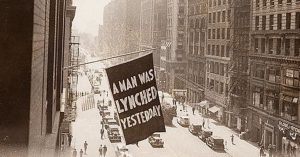 The word ‘lynching’, which has recently flooded our newspapers, has an American
The word ‘lynching’, which has recently flooded our newspapers, has an American  One afternoon in the spring of 2015, a senior State Department official named Frank Lowenstein paged through a government briefing book and noticed a map that he had never seen before. Lowenstein was the Obama Administration’s special envoy on Israeli-Palestinian negotiations, a position that exposed him to hundreds of maps of the West Bank. (One adorned his State Department office.)
One afternoon in the spring of 2015, a senior State Department official named Frank Lowenstein paged through a government briefing book and noticed a map that he had never seen before. Lowenstein was the Obama Administration’s special envoy on Israeli-Palestinian negotiations, a position that exposed him to hundreds of maps of the West Bank. (One adorned his State Department office.)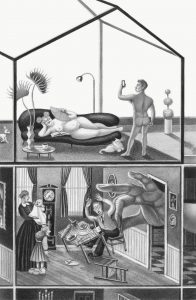 WHAT DO WE LOSE WHEN WE LOSE OUR PRIVACY?
WHAT DO WE LOSE WHEN WE LOSE OUR PRIVACY?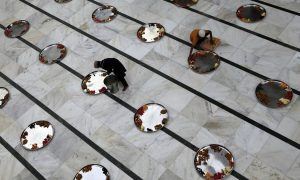 O
O Still, signs of considerable inner turbulence beneath the unruffled surface Powell presented to the world were there. He suffered from nearly permanent insomnia (‘In my early days I never slept a wink’), late on installing a camp bed by his desk so as not to keep his wife awake too. Prey not only to bouts of paralysing accidie, ‘the feeling that nothing’s worth doing’, but to spells of black depression – after an unsuccessful sortie to Hollywood in 1937, and in still more acute form, on returning to civilian life again after the war, when ‘every morning he wished he were dead’ – in his memoirs he implied a rather different explanation for having nothing to say when asked about his character, observing that ‘not everyone can stand the strain of gazing down too long into the personal crater, with its scene of Hieronymus Bosch activities taking place in the depths.’ Spurling, tacitly treating his depressions as discrete episodes, without much bearing on what he may have been like at some deeper level, does not recall this graphic image. Reluctance to venture much psychological surmise after Powell landed in London is visible in other ways. Reporting his claim never to have raised his voice again after leaving Eton, she later shows he was not so imperturbable: ‘rage and frustration’ at the tedium and inanity of life in the army ‘drove him to the kind of explosion he had witnessed as a child from his father’; he ‘lost control’ after Graham Greene’s obstruction of his book on Aubrey; he was hopelessly drunk with ‘unguarded anger, bitterness and shock’ on dismissal as literary editor at Punch; he severed his long-standing ties with the Daily Telegraph in ‘grief and rage’ at infantile barbs from the junior Waugh.
Still, signs of considerable inner turbulence beneath the unruffled surface Powell presented to the world were there. He suffered from nearly permanent insomnia (‘In my early days I never slept a wink’), late on installing a camp bed by his desk so as not to keep his wife awake too. Prey not only to bouts of paralysing accidie, ‘the feeling that nothing’s worth doing’, but to spells of black depression – after an unsuccessful sortie to Hollywood in 1937, and in still more acute form, on returning to civilian life again after the war, when ‘every morning he wished he were dead’ – in his memoirs he implied a rather different explanation for having nothing to say when asked about his character, observing that ‘not everyone can stand the strain of gazing down too long into the personal crater, with its scene of Hieronymus Bosch activities taking place in the depths.’ Spurling, tacitly treating his depressions as discrete episodes, without much bearing on what he may have been like at some deeper level, does not recall this graphic image. Reluctance to venture much psychological surmise after Powell landed in London is visible in other ways. Reporting his claim never to have raised his voice again after leaving Eton, she later shows he was not so imperturbable: ‘rage and frustration’ at the tedium and inanity of life in the army ‘drove him to the kind of explosion he had witnessed as a child from his father’; he ‘lost control’ after Graham Greene’s obstruction of his book on Aubrey; he was hopelessly drunk with ‘unguarded anger, bitterness and shock’ on dismissal as literary editor at Punch; he severed his long-standing ties with the Daily Telegraph in ‘grief and rage’ at infantile barbs from the junior Waugh.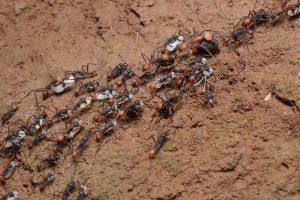 Army ant (Eciton) soldiers are bigger but do not have larger brains than other workers within the same colony that fulfill more complex tasks, according to a study published in the open access journal BMC Zoology. A collaborative team of researchers led by Drexel University in Philadelphia, US and German colleagues suggests that because the very specific and limited tasks soldiers fulfill place limited cognitive demands on them, investment in the development of brain tissue is also limited. Prof. Sean O’Donnell, lead author of the study said: “To compare different types of ant castes—soldiers and other workers—we took advantage of the dramatically distinct soldier class of workers in Eciton army ant colonies. Soldiers are morphologically distinct—they are bigger than their nest mates—but also behaviorally distinct: they have a simpler behavioral repertoire. Our findings support the idea that the simple behaviors of soldiers allow for reduced investment in brain development.”
Army ant (Eciton) soldiers are bigger but do not have larger brains than other workers within the same colony that fulfill more complex tasks, according to a study published in the open access journal BMC Zoology. A collaborative team of researchers led by Drexel University in Philadelphia, US and German colleagues suggests that because the very specific and limited tasks soldiers fulfill place limited cognitive demands on them, investment in the development of brain tissue is also limited. Prof. Sean O’Donnell, lead author of the study said: “To compare different types of ant castes—soldiers and other workers—we took advantage of the dramatically distinct soldier class of workers in Eciton army ant colonies. Soldiers are morphologically distinct—they are bigger than their nest mates—but also behaviorally distinct: they have a simpler behavioral repertoire. Our findings support the idea that the simple behaviors of soldiers allow for reduced investment in brain development.”